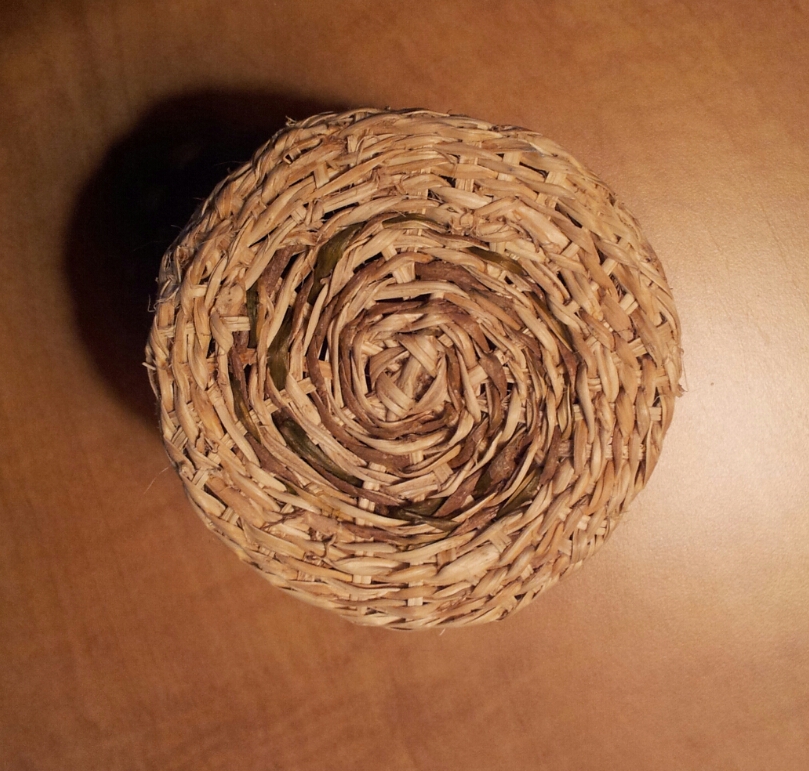 |
| Siberian iris leaves bundled for storage |
Weaving in the studio over the Thanksgiving long weekend, I was reflecting on my changed (upgraded?) perspective on what it means to harvest for the future.
In the studio, it has been a glut of harvesting over the past few months - gathering supplies for use over the winter, spring and early summer when our weaving materials of choice are scarce or not ready for collection. The only material available year round seems to be English Ivy but all the others? Blackberry bark - the harvest window is late July/early Aug (from the time the flowers begin attracting bees to shortly after the first green-hard berries form). Iris leaves - best harvested in the fall. Willow and hazel - late winter/early spring. . . . and so on. . . .
A couple of weeks ago, while harvesting Siberian Iris leaves at the Means of Production garden, I asked myself (when the sun was too hot and my back tired)... "Do we have enough yet?" In the midst of my grumbling I began to realize that what seems like a huge bounty now (I estimated close to 3/4 m3 of leaves were harvested that afternoon) may in fact still leave us short come late spring....

So a 'Horn of Plenty' to celebrate the bounty of the harvest and (hopefully) many months of weaving to coming before we grab our garden cutters and head back into the garden once again for next years harvest!

Materials used:
English Ivy - used for the spokes and some twining.
Siberian Iris leaves - twining
Day lily leaves - twining
Day lily flower stalks


















